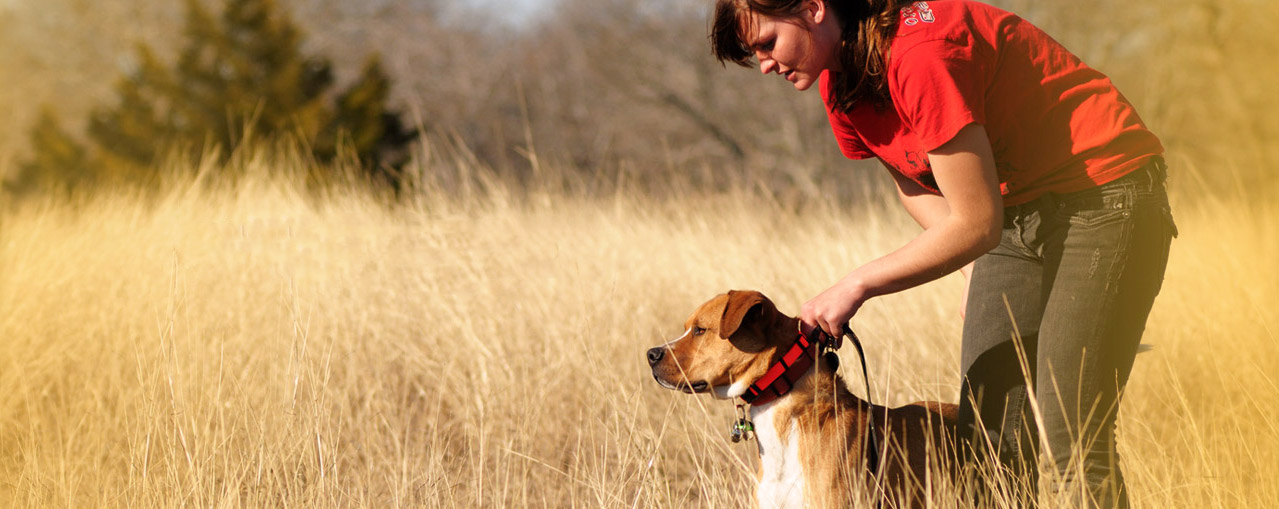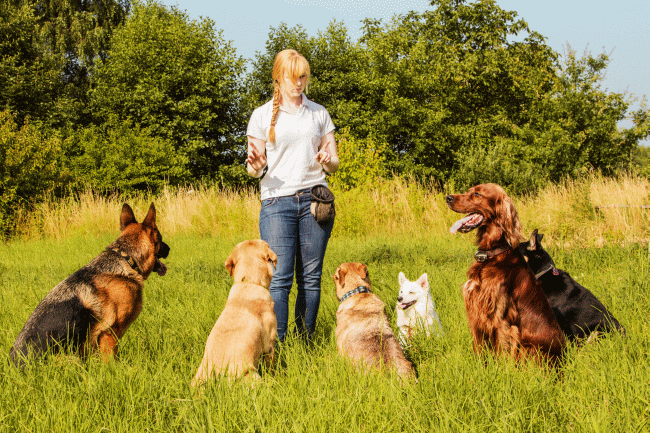Find the Best Dog Training Near Me for Effective Obedience and Behavioral Solutions
Find the Best Dog Training Near Me for Effective Obedience and Behavioral Solutions
Blog Article
Newbie's Guide to Successful Dog Training in your home
Effectively training a pet in the house calls for a nuanced understanding of canine actions and reliable interaction methods. Establishing clear training goals, using top notch rewards, and keeping consistency across household participants are important elements. In addition, integrating training into everyday routines can improve both interaction and retention. Nevertheless, several beginner trainers run into difficulties that might hinder progress. To navigate these intricacies successfully, it's necessary to discover several vital elements that can change your technique and result in a harmonious connection with your family pet. What basic concepts should every novice understanding to guarantee success?
Comprehending Dog Habits
Comprehending canine habits is vital for effective training and promoting an unified relationship between human beings and their canine companions - Puppy Training. Canines connect largely with body movement, articulations, and faces, making it important for proprietors to translate these signals accurately. Acknowledging behaviors such as tail wagging, grumbling, or cowering can provide insights into a pet's emotional state and intents
In addition, comprehending the natural impulses of pets, such as their pack mentality, assists proprietors develop leadership functions within the home. This is vital for producing a structured setting where pet dogs feel protected and are a lot more responsive to training. Dogs are additionally influenced by their socialization experiences; very early direct exposure to various environments, people, and other animals can substantially form their behavior later in life.
Usual behavioral concerns, such as aggression, stress and anxiety, or excessive barking, often originate from misunderstandings or unmet needs. Observing and resolving these issues promptly can prevent acceleration and guarantee a positive training experience. By fostering a deep understanding of canine actions, proprietors can tailor their training techniques to fit their canine friends, inevitably resulting in a mannerly and happy animal.

Important Training Devices
A well-equipped training room can significantly boost the performance of pet training at home. Essential training devices guarantee that both the instructor and the pet dog can take part in efficient sessions that foster learning and bonding.

Investing in a sturdy chain and a comfortable, well-fitting collar or harness is essential for security and control. These devices help establish boundaries and make sure the pet dog remains safe during training. In addition, a marked training location, cost-free from interruptions, help focus for both the instructor and the canine.
Educating help such as training pads, cones, or dexterity equipment can also enhance the experience by presenting range and challenges. Lastly, having a note pad or electronic application for tracking progress can be indispensable, allowing you to keep in mind successes and locations additional hints for enhancement. Utilizing these important tools will certainly create a favorable training environment and lay the foundation for effective learning.
Developing an Educating Routine
Establishing a constant training regimen is crucial for effective dog training at home. A well-structured routine not just assists in strengthening desired actions however also offers your pet dog with a sense of protection and predictability. To create an effective training regular, start by determining particular training goals, such as basic commands, leash strolling, or housebreaking.
Select a marked time every day for training sessions, ideally when your pet dog is sharp and receptive. Sessions ought to be brief, approximately 5 to 15 minutes, to maintain focus and stop exhaustion. Uniformity in timing and atmosphere will certainly boost your pet dog's knowing experience.
Integrate training right into daily activities to reinforce skills. Practice commands throughout strolls or nourishment, which incorporates finding out right into all-natural routines. In addition, continue to be adaptable and readjust the regular as necessary, fitting your pet dog's energy degrees and mood.
Positive Reinforcement Techniques

When executing favorable reinforcement, it is necessary to choose incentives that are motivating for your pet. High-value deals with, such as little pieces of hen or cheese, can be particularly reliable throughout training sessions. Furthermore, varying the incentives can preserve your pet's rate of interest and enthusiasm.
Start with easy commands, like "rest" or "remain," and progressively development to much more complicated tasks. Consistency is key; ensure that all family members use the very same commands and benefit systems to prevent confusion.
In addition, it is important to continue to be client and stay clear of stress. Pets, like human beings, discover at their own rate. By promoting an encouraging training atmosphere with positive reinforcement, you can improve your dog's understanding experience while enhancing the bond in between you and your fuzzy companion, laying the foundation for successful training end results.
Usual Educating Obstacles
While educating a dog at home can be a gratifying experience, it frequently features a set of typical difficulties that can evaluate both patience and consistency. One prevalent issue is distraction. Pet dogs might become quickly averted by sounds, activities, and even aromas in their atmosphere, making it tough to keep their emphasis during training sessions.
An additional challenge is incongruity in commands and support. It can impede and perplex the canine development Bonuses if household members utilize different hints helpful hints or benefits. Establishing a unified approach is crucial for effective communication.
Furthermore, canines can experience stress or tension, especially if they do not understand what is anticipated of them. This can cause unfavorable actions, such as barking or chewing.
Finally, the timing of reinforcement is vital. Delayed benefits can reduce the performance of positive reinforcement, as pet dogs may fall short to connect the behavior with the incentive.
Getting rid of these challenges requires dedication, clear communication, and an organized training strategy - Puppy Training. Acknowledging and addressing these usual obstacles will certainly lead the method for an extra enjoyable and successful training experience in your home
Final Thought
In conclusion, effective pet dog training at home necessitates an extensive understanding of canine behavior and effective interaction approaches. By developing clear training goals and making use of premium deals with alongside favorable support, the training procedure ends up being extra rewarding for both the instructor and the dog.
Establishing a consistent training routine is essential for efficient dog training at home.Favorable support strategies are essential to reliable pet dog training, advertising desired behaviors via incentives rather than penalty. By promoting a helpful training setting through positive support, you can improve your pet's learning experience while reinforcing the bond between you and your hairy buddy, laying the foundation for successful training end results.
In conclusion, successful dog training at home necessitates an extensive understanding of canine habits and effective interaction methods. By developing clear training objectives and utilizing high-quality treats alongside favorable support, the training procedure ends up being extra satisfying for both the dog and the fitness instructor.
Report this page